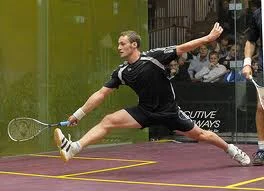In the previous post I pointed out that the developmental movement patterns learned in infancy are building blocks for the more complex movements that we use in our daily lives as adults. These simple patterns are combined to form sophisticated movements, just as words and letters are combined to make sentences.
Read MoreIn the previous post I discussed the idea that flexibility is generally overrated as a quality that promotes sports performance. In particular, I argued that: most sports do not involve extreme ranges of motion; most elite athletes in fact have only average flexibility; and quality of motion at a joint is usually far more important than quantity of motion. That being said, it is definitely the case that in many sports, some very important events happen near the end ranges of motion and this may require some very specific preparation. For example, in my own sport, squash, players are called upon to repeatedly strike the ball with full force while in a fully stretched out deep lunge position. While most people have the flexibility to get into this lunge, it does take quite a bit of training to be able to get there quickly and then hit a ball with maximum force. In this post I’ll share some thoughts on how to improve power, speed or skill at end ranges of motion.
Read More

